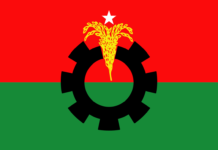
Bangladesh has been identified as one of the ‘star performers’ in the poverty reduction initiative globally as the world poverty is coming down rapidly.
Some of the poorest people in the world are becoming significantly less poor, according to a groundbreaking academic study which has taken a new approach to measuring deprivation.
The report, by Oxford University’s poverty and human development initiative, predicts that countries among the most impoverished in the world could see acute poverty eradicated within 20 years if they continue at present rates, reports the Guardian.
It identifies ‘star performer’ nations such as Rwanda, Nepal and Bangladesh as places where deprivation could disappear within the lifetime of present generations. Close on their heels with reductions in poverty levels were Ghana, Tanzania, Cambodia and Bolivia.
The study comes after the UN’s latest development report published last week which stated that poverty reduction drives in the developing world were exceeding all expectations.
It says: “The world is witnessing an epochal ‘global rebalancing’ with higher growth in at least 40 poor countries helping lift hundreds of millions out of poverty and into a new ‘global middle class’.
Never in history have the living conditions and prospects of so many people changed so dramatically and so fast.”
The brighter global picture is the result of international and national aid and development projects investing in schools, health clinics, housing, infrastructure and improved access to water.
The UN also pointed to trade as being a key factor which was improving conditions in Afghanistan, Ethiopia, Rwanda and Sierra Leone.
These improvements have not been picked up in the past when poverty has been measured strictly in income terms without taking into account other factors – health, education and living standards.
The study of the world’s poorest one billion people uses a new measure, the Multidimensional Poverty Index (MPI), which was just updated in the 2013 UN report.
It includes 10 indicators to calculate poverty – nutrition, child mortality, years of schooling and attendance, cooking fuel, water, sanitation, electricity assets and a covered floor.
The initiative hopes insights from the MPI will incentivise international donors and governments to help the poorest by allowing the results to be measured.
The academics believe old methods of looking at income levels – such as those living on $1.25 a day or less – ignores other deprivations in, for example, nutrition, health and sanitation.
The system was developed in 2010 by the institute’s director, Dr Sabina Alkire, and Dr Maria Emma Santos.
Dr Alkire said: “As poor people worldwide have said, poverty is more than money – it is ill health, it is food insecurity, it is not having work, or experiencing violence and humiliation, or not having health care, electricity, or good housing.
“Citizen activism is under-appreciated for its role. Maybe we have been overlooking the power of the people themselves, women who are empowering each other, civil society pulling itself up.”
The study found that in 2013 a total of 1.6 billion people are living in “multidimensional” poverty. The poorest one billion live in 100 countries.
Most of the bottom billion live in South Asia, with India home to 40 percent, followed by sub-Saharan Africa with 33 percent. The report also found that 9.5 percent of the bottom billion poor people lived in developed, upper middle-income countries.
Source: UNB Connect









